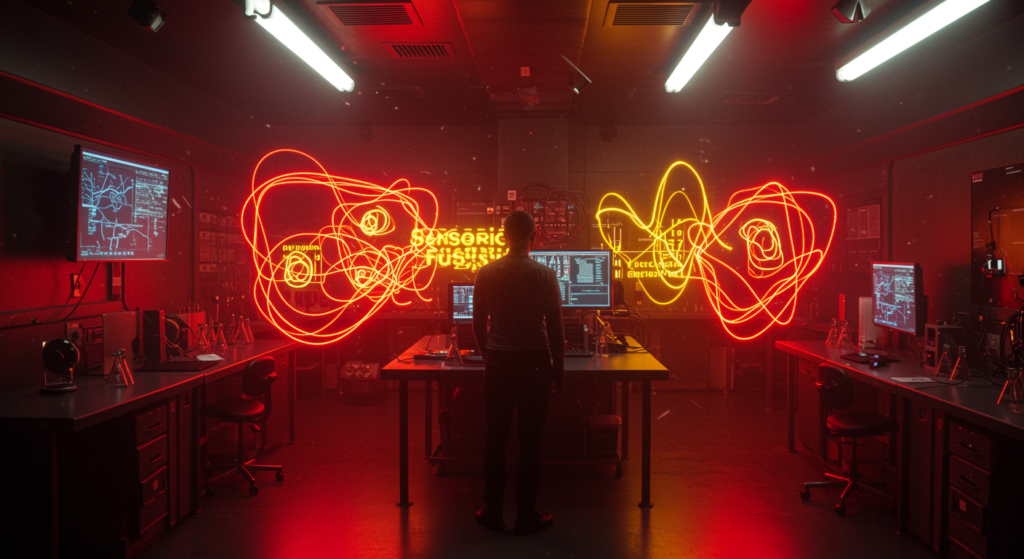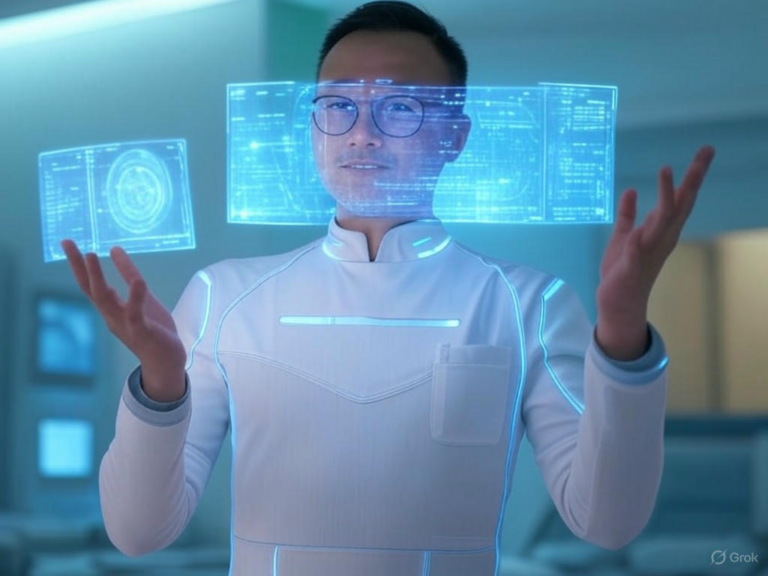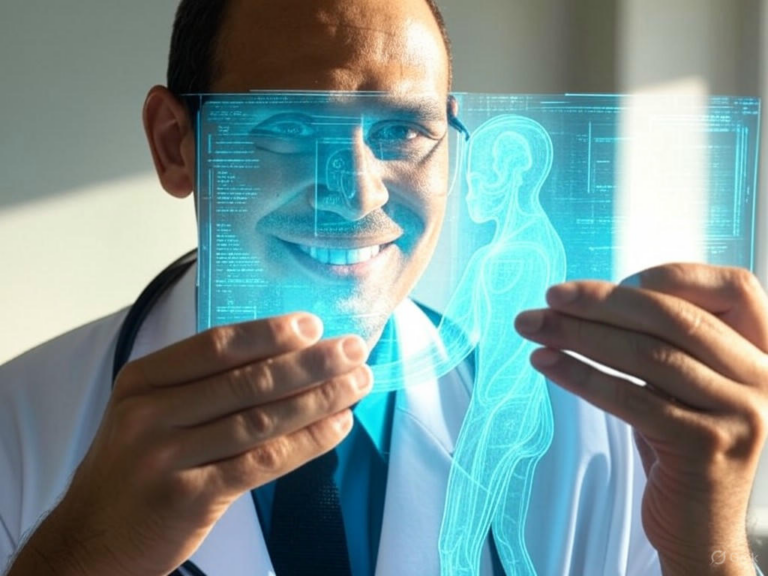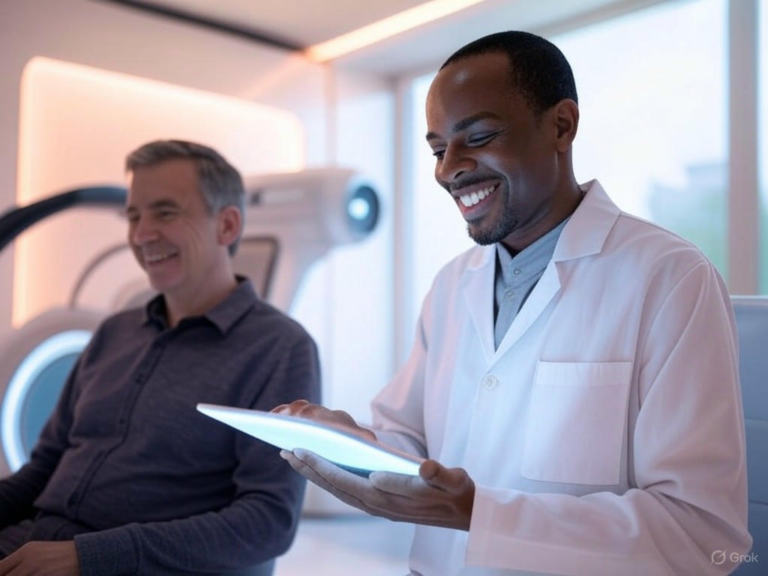
AI Synesthesia Explained: Enhancing AI Perception and Creativity
Understanding AI Synesthesia: When Machines Cross Sensory Boundaries
Have you ever wondered how machines might experience the world like humans do, blending sights, sounds, and ideas in unexpected ways? AI synesthesia is making this a reality, allowing artificial intelligence to merge different sensory inputs and unlock new levels of creativity. In humans, synesthesia means that one sense can trigger another—think of seeing colors when hearing music—and now, AI systems are adopting similar cross-connections to interpret and generate content more dynamically.
This phenomenon isn’t just mimicry; it’s a leap forward in machine learning that helps AI perceive relationships between data types that were once separate. For instance, AI synesthesia could turn a simple description into a vivid image, much like how a synesthete might visualize words as colors, enhancing overall machine perception.
The Rise of Generative Synesthesia in AI
AI synesthesia is gaining momentum through tools like Midjourney and DALL-E, which transform text into stunning visuals. A study in PNAS Nexus revealed that these systems not only speed up artistic workflows but also elevate the quality of creations when humans collaborate with them (PNAS Nexus). Interestingly, while routine ideas became more common, the most innovative outputs soared, showing how generative synesthesia amplifies creativity.
This blend of human ingenuity and AI power creates a synergy that’s hard to beat alone. Imagine an artist describing a scene and watching AI synesthesia bring it to life with unexpected twists—it’s like having a creative partner that sees beyond the obvious.
Why does this matter? Because it demonstrates how AI synesthesia can push boundaries, making everyday tasks more efficient and inspiring.
Exploring the Science of AI Synesthesia
Neural Mechanisms and Cross-Modal Processing
Drawing from human synesthesia, where brain pathways overlap to link senses, AI synesthesia builds artificial networks that do the same. Researchers are designing algorithms that connect visual, auditory, and textual data, mimicking those neural cross-wirings. This approach helps AI not just process information but truly understand it in a more integrated way.
Could this lead to AI that thinks more like us? Absolutely, as it allows machines to form associations that enhance perception and problem-solving. For example, an AI might link a sound to a color pattern, opening doors to richer data analysis.
Sensor Fusion for Smarter AI Perception
In practical terms, AI synesthesia shines in sensor fusion, where devices combine inputs from cameras, radar, and more to build a fuller picture of the environment. Think about self-driving cars that use this fusion to navigate safely in fog or crowds. This method boosts accuracy through cross-validation and leverages each sensor’s strengths, much like how we rely on multiple senses daily.
One key benefit is how it compensates for limitations—say, poor lighting for a camera—creating a reliable, real-time response. If you’re developing AI applications, consider experimenting with sensor fusion to mimic AI synesthesia and improve outcomes.
Real-World Applications of AI Synesthesia
Transforming Creative Fields
AI synesthesia is revolutionizing art and design by enabling seamless transitions between text, music, and visuals. Tools that convert descriptions into animations or melodies are empowering creators to explore ideas faster and with greater depth. According to the PNAS study, artists using these systems produce more work and achieve higher novelty peaks, proving that AI synesthesia enhances human creativity rather than replacing it.
Picture a marketer crafting a campaign where text evokes images and sounds—it’s a game-changer for engagement. To get started, try integrating AI tools into your workflow for a fresh perspective on content creation.
Advancing Autonomous Technologies
In robotics and vehicles, AI synesthesia helps machines interact with the world more intuitively by fusing data from various sources. For instance, a robot might combine visual and tactile inputs to handle objects delicately, much like a person would. This cross-modal approach is crucial for tasks in unpredictable settings, such as warehouses or urban streets.
Have you considered how this could evolve safety features in your daily commute? It’s not just about tech; it’s about making AI more reliable and adaptive.
Innovations in Healthcare
Healthcare is another area where AI synesthesia is making waves, integrating imaging, patient data, and genetics for better diagnostics. These systems can spot patterns across datasets that doctors might overlook, leading to earlier interventions. For example, an AI could link a symptom description with scan results to suggest personalized treatments.
This capability highlights the potential for AI synesthesia to save lives through enhanced perception. If you’re in the medical field, exploring these tools could offer actionable insights for your practice.
Lessons from Human Synesthesia for AI Development
Human synesthesia, with its unique cognitive boosts like improved memory, is inspiring AI advancements. Studies show synesthetes often excel in tasks involving associations, such as recalling information more vividly. By replicating these traits, AI synesthesia could lead to machines that learn and adapt more effectively.
Researchers at Portland State University are even testing ways to simulate this for human benefit, like enhancing language skills. What if we used AI to train our own minds in similar ways?
Simulating Synesthesia for Better Learning
One exciting proposal involves creating AI-driven experiences that mimic synesthesia to improve education. Imagine math lessons where numbers appear as colors and sounds, making concepts stickier. This bidirectional exchange between humans and AI could redefine how we approach cognitive enhancement.
It’s a reminder that AI synesthesia isn’t just for machines—it’s a tool for us too. Try incorporating multi-sensory techniques in your learning routine for a noticeable difference.
Technical Building Blocks of AI Synesthesia
Deep Learning and Cross-Modal Architectures
At the core of AI synesthesia are deep learning models like multimodal transformers, which handle text, images, and audio together. These architectures use cross-attention to spotlight connections between data types, fostering a more holistic understanding. Transfer learning further refines this by adapting models across domains, much like training a versatile employee.
This setup allows AI to build rich representations that echo human sensory blending. For developers, mastering these techniques could unlock new possibilities in AI projects.
Training Strategies for Enhanced AI Perception
Cross-modal training involves teaching AI to recognize patterns across inputs, strengthening its ability to generalize. By drawing from vast datasets, systems can evolve to handle real-world complexities with ease. This is where AI synesthesia truly shines, turning isolated data into interconnected knowledge.
If you’re building AI, focus on diverse training to mimic this effect and boost performance.
The Future Landscape of AI Perception
Expanding Beyond Human Senses
AI synesthesia opens doors to perceptions far beyond our five senses, like detecting infrared or electromagnetic fields. Future systems might translate these into relatable forms, such as turning radiation patterns into music. This could bridge the gap between machine and human experiences in profound ways.
Ethically, this raises questions: If AI can “feel” the world differently, what does that mean for consciousness? It’s a topic worth pondering as we advance.
Practical Uses in Everyday Industries
In marketing, AI synesthesia helps craft content that engages multiple senses, boosting SEO and user interaction. For educators, it could mean interactive lessons that combine visuals and audio for better retention. These applications show how AI synesthesia is already transforming industries.
Challenges like computational demands remain, but they’re surmountable with innovation. Always weigh the authenticity of these systems against their practical value.
Overcoming Hurdles in AI Synesthesia
Developing true AI synesthesia involves tackling technical barriers, such as integrating diverse data streams in real time. While current models handle basic translations, achieving the depth of human synesthesia is still a work in progress. Despite this, the potential rewards make it a worthwhile pursuit.
Addressing Key Obstacles
Issues like high resource needs and ensuring meaningful integrations are common, but solutions are emerging through optimized algorithms. A study on induced synesthesia experiences highlighted the need for consistency, reminding us to aim for genuine cross-modal depth in AI.
Ultimately, whether AI synesthesia is “real” or simulated, its benefits are undeniable.
Wrapping Up: Embracing the Synesthetic Evolution
AI synesthesia is more than a trend—it’s a catalyst for smarter machines and inspired humans. By fostering connections between sensory domains, it’s paving the way for breakthroughs in creativity and perception. As we move forward, let’s continue exploring how this technology can enrich our lives.
What are your thoughts on AI synesthesia? Share your ideas in the comments, experiment with these tools, or check out our related posts on AI innovations. Let’s keep the conversation going!
References
- PNAS Nexus study on AI and creativity: PNAS Nexus
- Portland State University research: PDX Scholar
- Other sources: PsyPost, Inspirit AI, and more as referenced in the content.
AI synesthesia, generative synesthesia, AI perception, artificial intelligence creativity, sensory fusion in AI, machine perception, cross-modal processing, AI creativity enhancement, neural networks in AI, synesthetic AI applications







